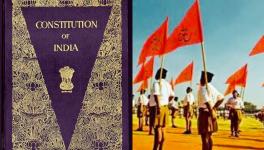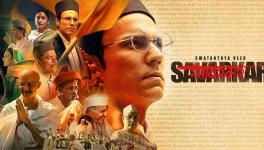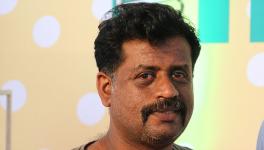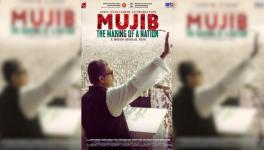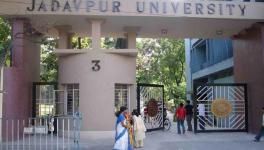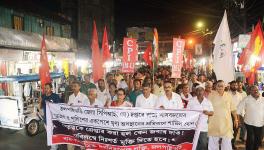The Riddles of Ashis Nandy

“The rearing and guiding of a civilization must depend upon its intellectual class.”B. R. Ambedkar, Ranade, Gandhi and Jinnah, 1943.
Delhi.
I. Arrest.
States are clumsy with their enormous power. When it suits the modern state, it uses it immense apparatus to constraint those who make claims upon it or who say things that denigrate this or that section of society. A college professor in West Bengal circulates a cartoon of the Chief Minister, Mamata Banerjee, and is charged with sending an “offensive message” via the Internet (Section 66A of the Information Technology Act). Last week in Calcutta, I met the chemistry professor, Ambikesh Mohapatra, at Jadavpur University where he teaches. He is a soft-spoken man with no obvious political inclinations. The spoof was hardly what the framers of 66A had in mind, but nonetheless supporters of the Chief Minister’s political party (the Trinamul Congress) beat him up and the State imprisoned him for a time (the case against him continues). Ambikesh Mohapatra seems nonplussed. He had taught his classes, he was on his way home, and he smiled cautiously when we talked about his notoriety.
A film is banned, an author is not allowed into a city. These are routine moments in the life of the modern State. Here the example is India. It could be any State. This is the reason why PEN International was formed in 1921, and the reason why it and other groups have a full-time job raising awareness of the clumsy and dangerous authority of modern States.
The story of Ashis Nandy intersects with the story of Ambikesh Mohapatra only in this aspect. Nandy, a Guru-like figure for sections of the Indian intelligentsia, made some remarks at the Jaipur Literary Festival, which earned him several arrest warrants. He moved the Indian Supreme Court on grounds that an idea cannot be penalized. The Court responded that if an idea is offensive and creates social harm, there could be a penalty (“Yes, an idea can certainly be punished under the laws. An idea is a summation of verbal acts and it can be penalized”).
Modern liberalism, from its earliest texts, has struggled with the problem of free speech and State suppression (John Stuart Mill, On Liberty, 1859), and recently with the problem of hate speech and its suppression (UN, “International Covenant on Civil and Political Rights,” 1966). Article 20.2 of the Covenant says, “Any advocacy of national, racial or religious hatred that constitutes incitement to discrimination, hostility or violence shall be prohibited by law.” This is a very high standard. Casual remarks of hostility are not covered by it. India’s Constitution provides protections for freedom of
speech (article 19.1), but also allows the State to frame “reasonable restrictions” (article 19.2) that endanger “the sovereignty and integrity of India, the security of the State, friendly relations with foreign States, public order, decency or morality, or in relation to contempt of court, defamation or incitement to an offence.” This is also too general and it is often used far too often as a cover for the political interests of the powerful than as a shield to protect the powerless.
More particular is India’s Scheduled Castes and Scheduled Tribes Prevention of Atrocities Act (1989), which can be invoked against someone who “intentionally insults or intimidates with intent to humiliate a member of a Scheduled Caste or a Scheduled Tribe within public view.” The publisher S. Anand cites this clause and then comments that it was “meant to challenge the impunity with which the privileged castes routinely and habitually insult Dalits and adivasis,” those who are socially oppressed.
The prosecution of speech is a delicate affair, which in most cases is indelicately handed. It is always good to err on the side of suspicion when a State decides to take in hand the words of a citizen.
II. Words.
Are you now supporting the idea that you expressed?
Indian Supreme Court, February 1, 2013.
When I was in graduate school to study Indian history, it was obligatory to read Ashis Nandy’s An Intimate Enemy (1983). It was a book with a broad brush, sweeping away the entire heritage of modernity (liberalism to Marxism) in a gesture of anti-poorerprashadcolonialism in order to revive a mythological and suppressed Tradition that was its
victim. It was this Tradition — the world-view of a fantasy Indian Village — that would redeem India or condemn it to the way of the West. From this address of Tradition, Nandy has over the course of the past three decades taken some pretty outrageous positions:
* When a 17-year old girl was burned to death as a sati in 1987, Nandy took to the Indian Express (“The Sociology of Sati,” October 5, 1987) to offer a convoluted argument that suggested that those who attacked the practice were influenced by “a new form of internal colonialism.” Nandy could not fathom the level of outrage by Indian feminists, in particular, and suggested that they had an antipathy to Tradition, associating it with superstition. There was a suggestion in this essay and then in his longer academic pieces on sati that Nandy was less interested in historical exploration than in making a polemical case for Tradition (this was brought out clearly by the distinguished historian Romila Thapar in her essay “Perspective in History,” Seminar, 342, February 1988).
* Nandy’s antipathy to Indian feminism emerged once more a few months ago during the Delhi gang rape protests. The head pontiff of the Hindu Right, Mohan Bhagawat of the RSS, said on January 4, 2013 that rapes occur only in “India” (the modern sector) and not in “Bharat” (the traditional sector). The factual inaccuracy of this aside, it earned a clear statement of support from Nandy (himself not too ruffled about accuracy, as we see above). In a convoluted statement, Nandy argued that “India” or the modern sector has a “personally thin culture” meaning that there is a greater anonymity in cities in particular (a point made by Georg Simmel a century ago). Then Nandy argues that in these “anonymous societies kinship dies and community ties weaken and become superficial. It is in these circumstances that you see the kind of rape that you are seeing today.” What is the kind of rape that we are seeing today? “The kinds of rapes that we hear of now are mostly violent.” Apart from the absurd implication that there could be “non-violent rapes,” Nandy suggests that close-knit societies (gemeinschaft) do not experience rape, a phenomenon of modern society (gesellschaft). There is no uncontroversial evidence for this, nor that rape is unknown in either ancient or traditional India (the prohibitions against Strisangrahana and the literary evidence of rape should be sufficient to stop the generalities). It smells like old-fashioned misogyny.
* The last time Nandy got into trouble was over an opinion essay in the Times of India (“Blame the Middle Class,” January 8, 2008). This was in reaction to Gujarat’s pogroms. Nandy wrote, “The actual killers are the lowest of the low, mostly tribals and Dalits. The middle class controls the media and education, which have become hate factories in recent times. And they receive spirited support from most non-resident Indians who, at a safe distance from India, can afford to be more nationalist, bloodthirsty, and irresponsible.” A complaint in Ahmedabad on the grounds of hate speech threatened Nandy, who took recourse in the Supreme Court, which sided with him in that case. There seemed little in the essay that rose to the level of hate speech. The Court made a very good call.
This is Nandy’s history as he rose to the occasion in Jaipur in late January. On a panel on “The Republic of Ideas,” the journalist Tarun Tejpal made the rather banal point that India is a class society, with “people coming from nowhere, from the wrong side of the tracks not having the privilege of elite education, of elite background, of admission to elite clubs, but breaking through on the basis of their wit, their intelligence and their hunger and very often subverting the rules that certain classes made.” The last section was the opening for Nandy. He then came in with his statement,
“Just a response to this part, very briefly, he’s not saying the most important part of the story which will shock you and it will be a very undignified and, how should I put it, almost vulgar statement on my part. It is a fact that most of the corrupt come from the OBCs [Other Backward Castes] and the Scheduled Castes and now increasingly Scheduled Tribes and as long as this is the case, Indian republic will survive.”
Later, after an apology, Nandy said that he intended to say something that is quite banal. Everyone is corrupt, and yet it is mainly oppressed castes and tribes who are prosecuted for corruption. If this is what he intended to say, this is precisely what he did not say.
Evidence that Nandy’s statement was outrageous does not rest only with those who went to the police seeking his arrest. There is a hint in his own statement (anticipating that his statement will “shock” and that it is “undignified” and “vulgar”) and in the reaction of his co-panelist, the writer Ashutosh (“This is a classical case of how the elite in India. They perceive the downtrodden, the Dalits, the OBCs, and all. I think this is the most bizarre statement I have ever heard in this country”). The audience welcomed Ashutosh’s words. They recognized the problem.
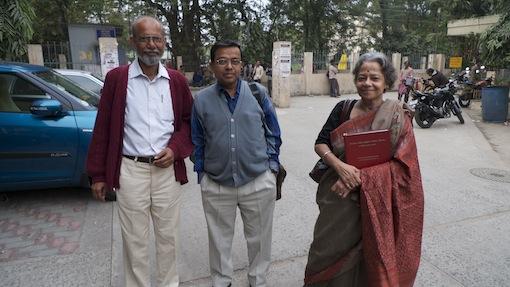
Ambikesh Mohapatra flanked by Gautam Gupta and
Himani Bannerji at Jadavpur University.
III. Defenses.
As if to prove the point that Nandy says he intended to make, the liberal elite gathered around him to defend his right to say whatever he wishes. These same intellectuals are rarely aroused when the smaller voices of history are suppressed (such as the Pune-based theatre group Kabir Kala Manch or even Mohapatra). Despite the court actions, it is unlikely that Nandy will be sentenced to jail time. As the media turn their attention to something else, the case of Nandy will slip off the radar.
It was not enough for the liberal defense to argue against the excesses of the State. It had to bathe its petitions in praise for Nandy and his work. The intellectual test that Nandy sets himself is impossible. In his 1983 book, he writes, “a purely professional critique of this book will not do. If you do not like it you will have to fight it the way one fights myths: by building or resurrecting more convincing myths. However, even myths have their biases.” Reason is banished, with counter-myths as the only weapon against his myths. Nandy’s statement at Jaipur was a kind of myth; the outrage against him is a kind of myth too; and so too is the myth of the defenders, many of whom are his colleagues or former colleagues at the Center for the Study of Developing Societies.
I asked Professor Mohapatra what he thought of the Nandy affair. He smiled gently and shook his head.
Vijay Prashad’s most recent work is The Poorer Nations: A Possible History of the Global South just out from Verso Books.
Disclaimer: The views expressed here are the author's personal views, and do not necessarily represent the views of Newsclick
Get the latest reports & analysis with people's perspective on Protests, movements & deep analytical videos, discussions of the current affairs in your Telegram app. Subscribe to NewsClick's Telegram channel & get Real-Time updates on stories, as they get published on our website.









